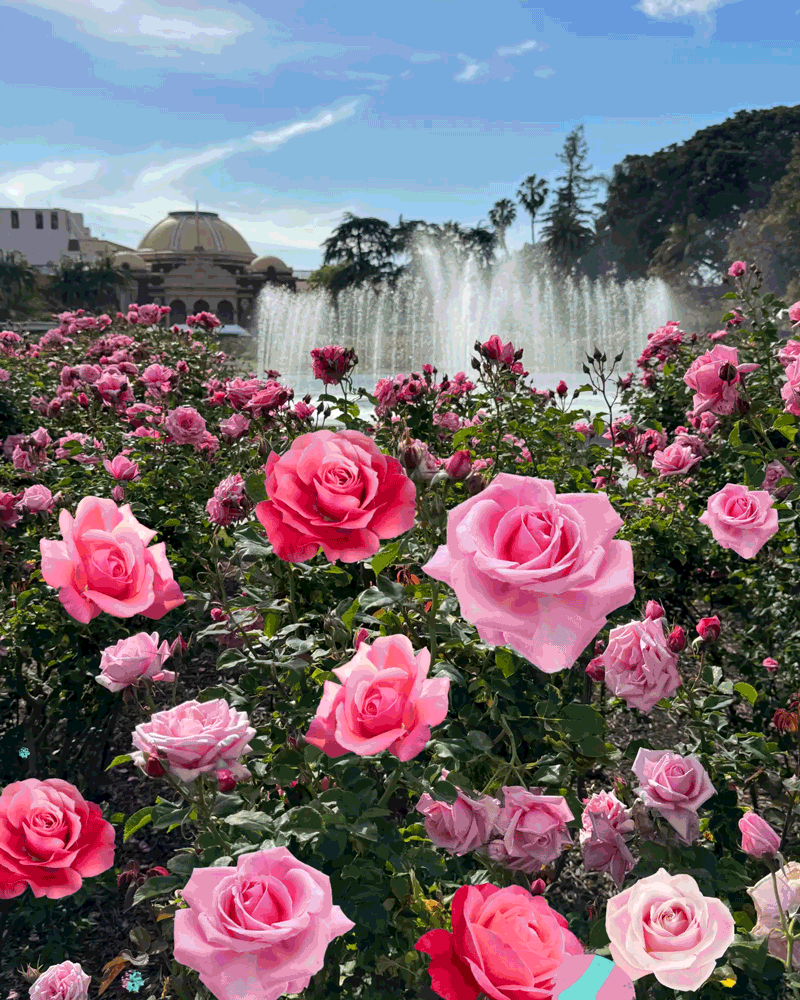STYLE / GARDENS : CALL THEM OLD-FASHIONED : Heirloom Roses Continue to Enchant With Their Heady Perfume and Storied Beginnings
- Share via
One sniff of a venerable Bourbon rose named ‘Honorine de Brabant’ and Sandy Gaal was hooked. “I’d never smelled anything like it before,” she recalls, the scent lingering in her memory. “It was heavenly.”
Intoxicated by the fragrance of antique roses, intrigued with their histories and entranced with their beauty, Gaal began searching for old roses, eventually finding many of them through mail-order catalogs. The timing was perfect. She and her husband, Peter, had just moved from their little garden in foggy Pacific Palisades to a full acre in sunny Santa Paula, where roses, old and new, get plenty of the sun they need. Twelve years later, the Gaals’ garden abounds with 250 varieties, half of them old roses and a quarter of them Austin roses, new ones that Englishman David Austin developed to look and smell old.
The American Rose Society categorizes all roses developed before 1867 as “Old Garden Roses,” which isn’t terribly helpful since that includes wild roses, Gallicas, Damasks, Centifolias, Moss roses, Portlands, Bourbons, Chinas, Teas, Noisettes, Hybrid Perpetuals and Musks. So old roses are a grab bag of floral form, with some blossoms as simple as a porcelain teacup and others as complex as layered lace petticoats. As a group, the plants have a more relaxed, natural shape, a striking contrast to the stiff, upright posture of modern roses, and this makes them useful for garden-making. They may, for instance, be demure little bushes, huge arching shrubs or brawny climbers capable of smothering a house.
On her rural acre, Gaal cultivates her flowers the old-fashioned way, gently feeding them twice a year with a cup each of blood and bone meal mix and two tablespoons of wood ash, watering some by hand (though drip irrigation snakes its way through parts of the garden) and avoiding chemical sprays. She’ll tell you that her old roses are tough plants, the reason they have survived the ages. Some of these heirloom plants were lost to horticulturists, only to be rediscovered, growing uncared-for in old cemeteries or beside abandoned homesteads.
Almost all old roses have histories that add to their allure. One of Gaal’s favorite roses, an 18th century Damask named ‘Celsiana,’ turns out to be the crinkled pink blossom captured in many Dutch still-lifes. It is extremely fragrant, described as a “citrus-and-spice blend,” and even the foliage exudes a hint of musk. The 1817 ‘Blush Noisette,’ another favorite with its blush-pink blooms and a light scent, has a colorful history that one authority suggests “reads like the plot for a Southern novel.”
There are many gardeners who’ve kept old roses alive by passing plants and cuttings from generation to generation. Each spring, Gaal hosts a garden tour and plant sale among her avocado trees and berry bushes, right next to the chicken coop. (For more information, send a self-addressed stamped envelope to Gaal at 11617 Telegraph Road, Santa Paula CA 93060.) She likes to think she’s doing her part in preserving old roses and recruiting more fans, and she probably is. After all, one captivating whiff is all it takes.
Though old roses are more readily available at local nurseries these days, mail-order catalogs remain a dependable source. Here are just a few:
* The Antique Rose Emporium, 9300 Lueckemeyer Road, Brenham, TX 77833; (800) 441-0002.
* Arena Rose Co., 536 W. Cambridge Ave., Phoenix, AZ 85003; (602) 266-2223.
* Heirloom Old Garden Roses, 24062 NE Riverside Drive, St. Paul, OR 97137; (503) 538-1576.)
* Mendocino Heirloom Roses, P.O. Box 670, Mendocino, CA 95460; (707) 877-1888.
* Vintage Gardens, 2227 Gravenstein Highway South, Sebastopol, CA 95472; (707) 829-2035.
* Wayside Gardens, 1 Garden Lane, Hodges, SC 29695-0001; (800) 845-1124.






